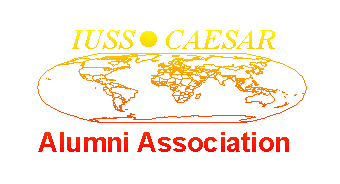In early 1963, the Naval Scientific and Technical Intelligence Center (NAVSTIC) found itself in a difficult position. They already had hallways clogged with piles of acoustic data from the new SOSUS array at Adak (AK) with more data from the Norwegian BRIDGE array on the horizon, and they had no one with the experience needed to analyze it.
For security reasons, those data could not be forwarded elsewhere for analysis: for example, to the SOSUS data analysis center in Brooklyn.
The NAVSTIC solution to this problem was to to hire two just-graduated mathematicians and George Miller and the writer - with years of SOSUS experience - to train them. It soon developed that it was far easier to become a mathematician than an acoustic analyst: it would take years of "exposure" at the right places to gain a useful level of analytical competence. The writer made the unhelpful suggestion that the mathematicians should be sent to Adak for at least five years.
The mathematicians "drifted" away and NAVSTIC was left with Miller and the writer to solve their problem. In essence, what we did was to create another problem for NAVSTIC: how to control two new employees who had ideas of their own on what data should receive priority analysis. NAVSTIC - with a submarine officer as CO - wanted us to analyze submarine-collected data which then had poor low-frequency response ahead of any Adak or BRIDGE data which had excellent low-frequency response.
It got pretty testy. Eventually it was suggested the writer find employment elsewhere but by that time we had developed "friends in high places" whose interest in what we had published based on Adak and BRIDGE data made it impossible for NAVSTIC to "alter" the existing situation. In fact, it essentially freed us to devote even more time to the low-frequency "goodies" provided by Adak and BRIDGE.
When George started to publish advanced intelligence assessments - especially speed capabilities - it was all over. No one had ever thought such refined assessments of such important information could be derived from acoustic data. Initially, NAVSTIC simply refused to accept the new information because - not being competent acoustic analysts - they could not understand how it had been derived. (Showing them a gram was a waste of time.) Others accepted the new assessments with glee and used them against the USN entity (easy to guess) that refused to acknowledge that the Soviet Union could construct and operate nuclear submarine and had been doing so since 1960 if not the very late 1950s. As late as about 1966, NOVEMBER, HOTEL and ECHO Class Soviet submarines were still officially described by the US Navy as "unconventional."
The event that finally forced some of the recalcitrants to change some - but not all - of their minds was an inter-fleet (LANT to PAC) transfer of a NOVEMBER and an ECHO via the Drake Passage south of South America with the last 5000 nautical miles of the central and western Pacific transit at an average speed of 20-knots
The war had been won. NAVSTIC settled down to accept the inevitable. It actually went further. When concerns arose about foreign naval activity, CNO Op-095, the ASW Directorate, would task NAVSTIC to send one of us overseas to evaluate developing situations and report back in real time.
On occasion, Ed Nielsen, then the senior civilian at the Office of Naval Intelligence, who acted with the authority of the Admiral, would direct CO NAVSTIC to support US surveillance interests overseas for extended periods or visit specific sites to determine why those sites were under-performing operationally, and "fix" the problem. Those trips as CNO "trouble-shooters" were diverting and successful.
Nielsen was a preview of coming attractions in the form of CAPT - later RADM - Dempster Jackson. He and Nielsen seemed to have the same motto: Do whatever is necessary to get the job done. Jackson looked after those who got the job done. Once, after returning from several months in North Oblivion (NO), Jackson asked how it had gone. My response: "Professionally, great but the food was terrible. I lost 30 pounds." Upon returning to NO a few weeks later, I found Jackson had had 1000 pounds of C-RATS (Combat Rations) shipped in: canned ham, canned fruit, crackers, and chocolate bars, it was all there, and most welcome, even every day.
The writer often considered himself more a CNO Op-095 employee than a NAVSTIC employee; certainly that's where the job security came from.
Writing this "ancient" history has been fun; hopefully a few of you will enjoyed reading it.
Bruce Rule
I enjoyed it. Thanks, Bruce!
Loved it! Thanks for sharing Bruce. Rick
Enjoyed reading of your history, looking forward to more.
What a fascinating story - thanks for sharing. This should end up in "Our Book" in some form.
